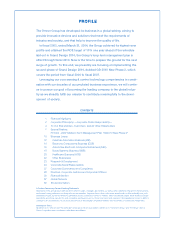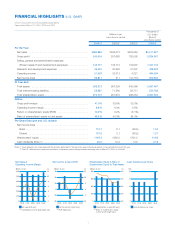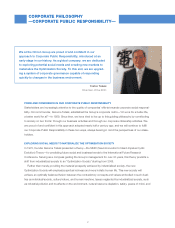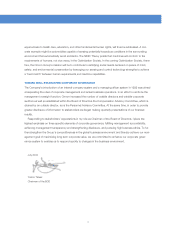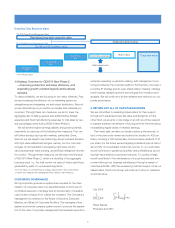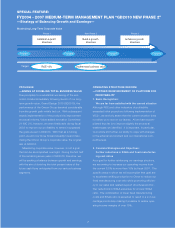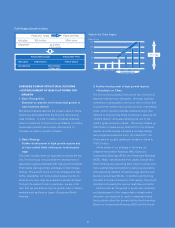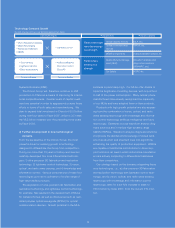Omron 2004 Annual Report Download - page 11
Download and view the complete annual report
Please find page 11 of the 2004 Omron annual report below. You can navigate through the pages in the report by either clicking on the pages listed below, or by using the keyword search tool below to find specific information within the annual report.
9
Systems Business (SSB).
The Omron Group will, therefore, continue to shift
production to China as a means of improving its interna-
tional competitiveness. Greater levels of capital invest-
ment are essential in order to aggressively pursue these
efforts in terms of both sales and manufacturing. We
plan to expand total investment in China to ¥30.0 billion
during next four years to fiscal 2007, which is 3.5 times
the ¥8.5 billion invested over the preceding three years
by fiscal 2003.
2) Further development in new technological
domains
From the perspective of the Omron Group, the most
powerful driver for realizing growth is technology
designed to differentiate the Group from competitors.
During our more than 70 years of history we have suc-
cessfully developed four core differentiated technolo-
gies: 1) ultra-precision 3D fabrication and replication
technology, 2) lightwave control technology, 3) vision,
optical, and radio wave sensing, and 4) knowledge and
information control. Various combinations of these four
technologies give rise to cultivation of a wide range of
high value-added products.
The application of ultra-precision 3D fabrication and
replication technology and lightwave control technology,
for example, has resulted in the development of MLAs
for cellular phones, as well as discoveries such as repli-
cated polymer optical waveguide (SPICA) for optical
communication devices. Growth potential in the MLA
business is particularly high. Our MLAs offer double to
triple the brightness of existing devices, with only a third
to half of the power consumption. Many cellular phone
manufacturers have already recognized the superiority
of our MLAs and have adopted them in their products.
Products with high growth potential are also appear-
ing from the combination of vision, optical, and radio
wave sensing technology with knowledge and informa-
tion control technology (artificial intelligence and fuzzy
technology). Examples include waveform analysis diag-
nosis solutions and in-vehicle high dynamic range
CMOS (HDRCs). Waveform analysis diagnosis solutions
incorporate the abilities and knowledge of skilled work-
ers on production and shipment lines into algorithms,
enhancing the quality of production equipment. HDRCs
are capable of substantial contributions to driver sup-
port functions, an area in which automobile manufactur-
ers are actively competing to differentiate themselves
from their competitors.
Our strategy based on the domains integrating these
core technologies, i.e., a) ultra-precision 3D fabrication
and replication technology with lightwave control tech-
nology, and b) vision, optical, and radio wave sensing
technology with knowledge and information control
technology, aims for a six-fold increase in sales to
¥60.0 billion by fiscal 2007, from the current ¥10.0 bil-
lion.
Technology-Centered Growth
Growth structure of four core technologies and two fields
Product examplesProduct fieldsCore technologies
Sensing technology Control technology
MLA, etc.
SPICA, etc.
3-axis acceleration sensors, etc.
Waveform analysis and
diagnostics solutions
(SIGNARC, etc.)
HDRC etc.
Optical display devices
Optical communication
devices
MEMS components
Quality lifecycle manage-
ment (QLM)
Car Safety
Fields where light
nano-technology
is a strength
Fields where
sensing is a
strength
• Micro-replication processing
• Master/Electrotyping
• Reproduction/Materials
• MEMS
•
Lightwave control
• Vision sensing
• Lightwave sensing
• Radio wave sensing
•
Artificial intelligence
information control
(Fuzzy/AI)


